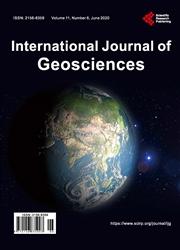Contamination, Precision and Accuracy of pXRF Geochemistry: Case Study-Polymetals Resources Ltd., Mansala Gold Project, Siguiri Basin, Northeast Guinea
引用次数: 0
Abstract
Quality Assurance and Quality Control (QA/QC) is a critical component of all pXRF geochemistry processes. A properly constructed pXRF QA/QC programme identifies possible instrumental errors and provides a means of securing fit for purpose data from the pXRF programme. pXRF QA/QC programmes involve daily contamination, precision, and accuracy checks to ensure the generation of fit for purpose data. In the exploration field or mine-site, pXRF is capable of producing extremely valuable data that is fit for purpose if calibrated properly. However, it should not be used as a replacement for acquiring data from an accredited laboratory using established analytical techniques that produce high quality data. Contamination is the checking of the cleanliness of the analyser window or the presence of dust in the measuring environment. At Polymetals, using Olympus Vanta C-Series pXRF analyser with silver anode, contamination is assessed by measuring an instrumental blank (SiO 2 ), to identify any foreign matter on the analyser window. Assuming that the window film is new, and the fused silica disc is dust free, only Si should be detected. If any other significant element is detected, the film is replaced, and the test is re-run. Accuracy is a measure of how close the measured value is to the true value and is assessed by measuring the abundance of selected elements contained within a Certified Reference Material (CRM) or the NIST check standard sample supplied with the pXRF analyserpXRF地球化学污染、精密度和准确度:以几内亚东北部Siguiri盆地Mansala Gold项目polymetals Resources Ltd为例
质量保证和质量控制(QA/QC)是所有pXRF地球化学过程的关键组成部分。正确构建的pXRF QA/QC程序可识别可能的仪器错误,并提供一种确保pXRF程序数据符合目的的方法。pXRF QA/QC程序包括日常污染,精度和准确性检查,以确保生成符合目的的数据。在勘探领域或矿区,如果校准得当,pXRF能够产生非常有价值的数据。然而,它不应该被用来取代从认可的实验室获取数据,使用已建立的分析技术产生高质量的数据。污染是检查分析仪窗口的清洁度或测量环境中是否存在灰尘。在Polymetals,使用带有银阳极的奥林巴斯万塔c系列pXRF分析仪,通过测量仪器空白(二氧化硅)来评估污染,以识别分析仪窗口上的任何异物。假设窗膜是新的,并且熔融石英盘是无尘的,则只应检测Si。如果检测到任何其他重要元素,则更换薄膜,并重新运行测试。准确度是测量值与真实值的接近程度,通过测量pXRF分析仪提供的认证参考物质(CRM)或NIST检查标准样品中所包含的选定元素的丰度来评估
本文章由计算机程序翻译,如有差异,请以英文原文为准。
求助全文
约1分钟内获得全文
求助全文

 求助内容:
求助内容: 应助结果提醒方式:
应助结果提醒方式:


